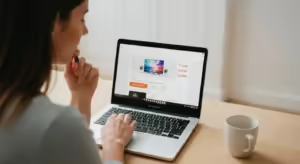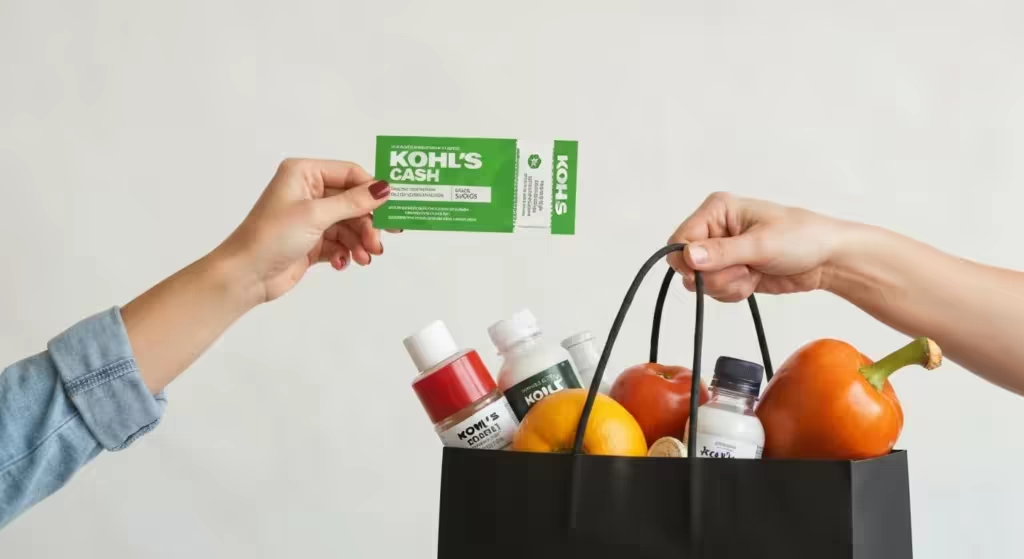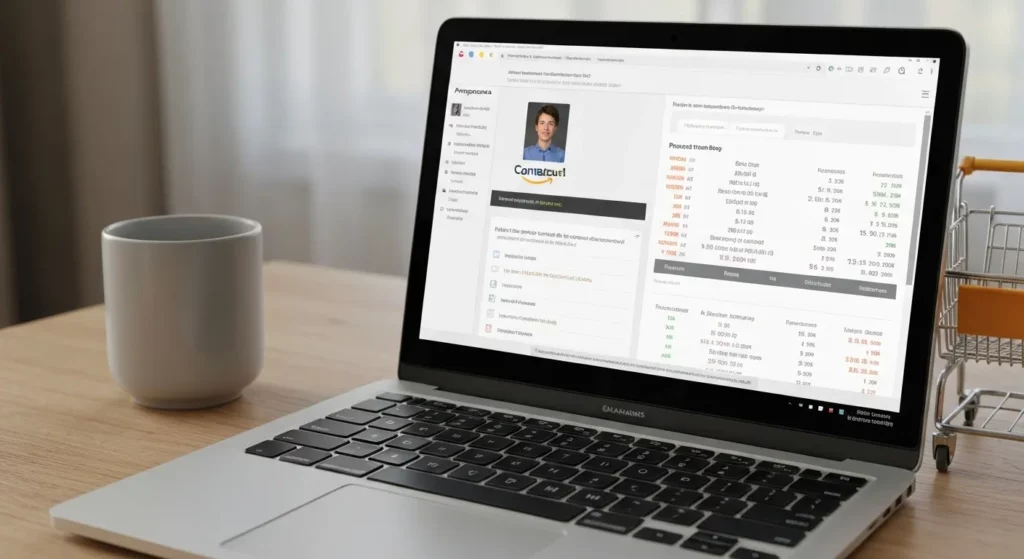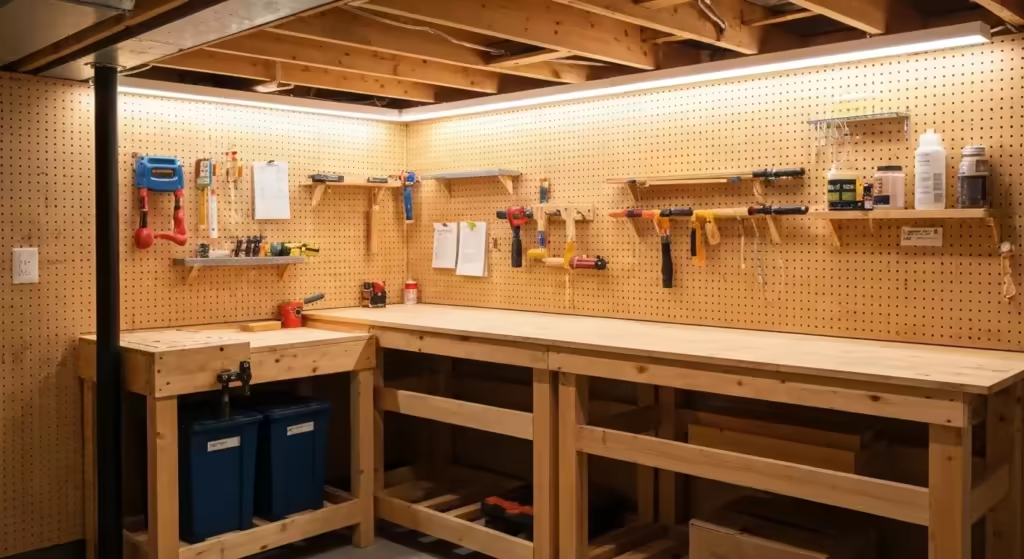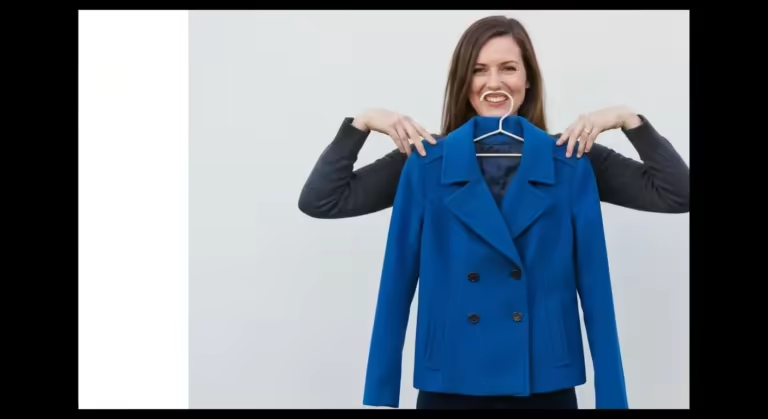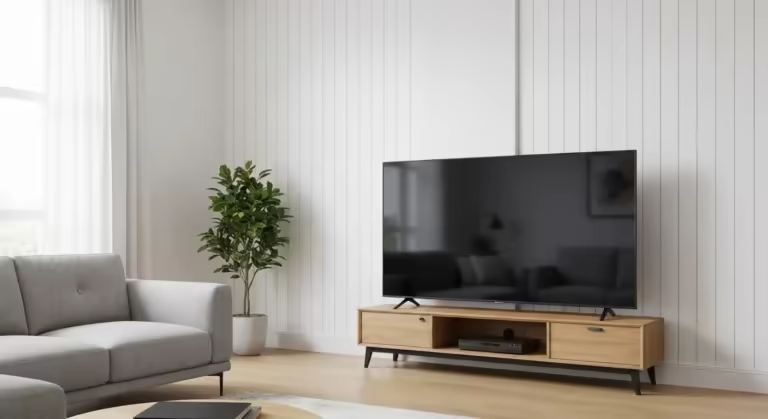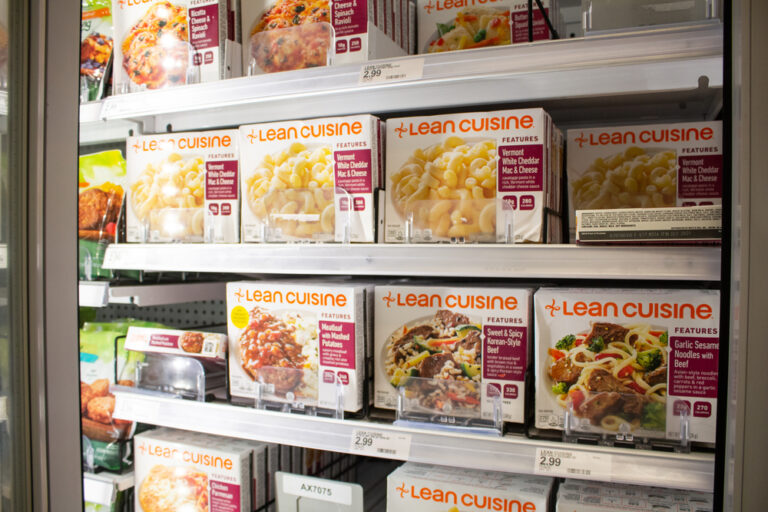For years, I believed a simple, unshakeable truth: VIP treatment was for the very important people who spent very important money. I’d see them at the airport, whisked past the long security lines. I’d notice them at my favorite department store, greeted by name and offered a glass of sparkling water while I sorted through the sales rack. I saw it as a different world, one with a price of admission I simply couldn’t afford.
Living on a carefully managed budget, especially as I’ve gotten older and my income has become more fixed, has made me a conscious consumer. I’m not a “big spender.” I’m a “careful spender,” a “planned spender.” The idea of dropping thousands of dollars at a single store to earn a special status felt not just impossible, but irresponsible. So, I accepted my place on the other side of the velvet rope, feeling like an invisible, perfectly average customer.
My turning point wasn’t some grand event. It was a quiet moment of frustration at a hotel check-in desk. I watched the couple in front of me get a smiling welcome, a room upgrade, and vouchers for free breakfast, all because of their “Platinum Status.” When it was my turn, the transaction was polite but purely functional. I got my key and nothing more. Walking to the elevator, I felt a familiar pang of annoyance, but this time it was followed by a question: What did they really do to earn that? Did they really spend a fortune, or did they know something I didn’t?
That simple question sparked a personal mission. I decided I was tired of feeling like a second-class customer just because I was on a budget. I set out to crack the code. This isn’t a list of generic hacks you can find anywhere online. This is my story. It’s a chronicle of my journey, the specific strategies I developed, the mistakes I made, and the incredible, tangible perks I now enjoy regularly. These are my secrets to getting VIP treatment without being a big spender.
-
Secret #1: I Realized My Consistent Loyalty Was More Valuable Than My Wallet
My first major breakthrough didn’t happen in a fancy hotel or a high-end boutique. It happened at my humble neighborhood coffee shop, a place I’d been visiting for the better part of a decade. Every morning, like clockwork, I’d walk in, order a large black coffee, pay with exact change, and be on my way. I was just another face in the morning rush, one of hundreds they served before 9 a.m.
I never expected special treatment. After all, my purchase was one of the cheapest things on the menu. I wasn’t buying fancy lattes or expensive pastries. I was just buying a coffee. In my mind, the VIPs were the people hosting business meetings there, spending fifty dollars on a Tuesday morning.
One rainy Wednesday, the line was unusually short, and the owner, a warm woman named Maria whom I’d only ever nodded to, was working the register. As I approached, she smiled and said, “A large black coffee, right? Let me get that for you.” I was a little taken aback that she remembered. As she handed me the cup, she also placed a small paper bag on the counter. “This is on me,” she said, gesturing to the bag which contained a fresh almond croissant. “You’re here every single day, rain or shine. You’re part of what makes this place feel like a neighborhood. We appreciate that.”
I was floored. I stammered a thank you and walked out in a bit of a daze. It wasn’t about the free pastry; it was about the recognition. A lightbulb went off in my head with the intensity of a flashbang. Maria didn’t value me for the size of my daily transaction. She valued me for the consistency of it. My predictable, daily presence was a form of currency I had never known I possessed. For a small business, a reliable, loyal customer who shows up day after day is a foundational asset. It’s guaranteed income. It’s a familiar face that builds a sense of community. It’s worth more than a one-time big spender.
This single experience fundamentally shifted my entire approach. I stopped thinking, “I can’t afford to be a VIP.” I started thinking, “Where is my loyalty most valuable?” I consciously decided to stop spreading my small, regular purchases across a dozen different stores. I used to go to one pharmacy for this, a different grocery store for that, and a third big-box store for cleaning supplies. Now, I channeled that spending. I chose one grocery store and went there exclusively. I picked one pharmacy for all my prescriptions and needs. I became a “regular.”
The lesson was profound: Businesses, especially smaller, local ones, are starved for loyalty in a world of endless choice. By consolidating my patronage, I wasn’t spending any more money, but I was concentrating my value. I started getting treated like Maria treated me—with recognition, with small perks, and with a genuine sense of being a valued part of their business. It was my first taste of VIP treatment, and it cost me nothing extra.
-
Secret #2: I Mastered the Art of the Small, Strategic Purchase
After my coffee shop epiphany, I felt emboldened. But how could I apply this to the big leagues? I had my eye on the loyalty program at a major department store, a place where the perks were tangible: free shipping, early access to their legendary sales, and even free alterations. The problem was the spending threshold. To even reach the first tier, I needed to spend $500 in a calendar year. On my budget, that felt like trying to climb a mountain in slippers.
My first instinct was to dismiss it as impossible. Five hundred dollars was a significant chunk of my discretionary budget. I could never justify spending that much on clothes or housewares I didn’t absolutely need. I felt that old sense of defeat creeping back in. The system was built for people with more disposable income. That was that.
But then I remembered the lesson of consistency. Maybe it wasn’t about one big, extravagant purchase. Maybe it was about redirecting the spending I was already doing. I sat down with my bank statements and a notepad. I made a list of all the small, recurring, non-grocery purchases I made every month: toiletries, greeting cards, socks, cleaning supplies, gifts for birthdays and holidays. It added up to a surprising amount, but it was scattered across five or six different retailers.
That’s when I devised my strategy of “purchase consolidation.” I decided that for one year, I would try to route every single one of those purchases through that one department store. It required a bit more planning. Instead of grabbing a birthday card from the drugstore on my way to a party, I’d buy a few at a time from the department store’s stationery section. When I ran low on my favorite face moisturizer, I’d wait for the store to have a beauty sale and buy it there instead of online. I bought all my family’s Christmas and birthday presents there, often using their free gift-wrapping service, which saved me time and money.
Slowly but surely, my loyalty account balance started to climb. A $15 purchase here, a $40 gift there. It wasn’t a flood, but it was a steady trickle. I kept a running tally. By October of that first year, I got the email: “Congratulations! You’ve reached VIP Bronze Status.” I felt a surge of triumph. I had done it. I had climbed the mountain, not by leaping to the top, but by finding a slow, steady path of small steps.
The perks were immediate. The next time I bought a pair of pants on sale, the $20 hemming fee was waived. A few weeks later, I got an email inviting me to shop their big annual sale a full day before the general public. I got first dibs on the best deals, saving more money than ever. I hadn’t spent a single dollar more than I would have otherwise; I had simply spent it smarter. It taught me that unlocking exclusive perks at stores wasn’t about spending more, but about being more strategic with the money you already plan to spend.
-
Secret #3: I Stopped Being an Anonymous Customer and Started Building Real Relationships
For most of my life as a shopper, I operated with a kind of quiet invisibility. I’d go into a store, find what I needed, pay, and leave. I never made a fuss, but I also never made a connection. I saw the staff as functional parts of the transaction. This approach, I came to realize, was costing me dearly in ways I couldn’t measure on a receipt.
My proving ground for this next secret was my local hardware store. It’s a family-owned place, not a big-box chain. I was in there fairly often for various home and garden projects. I used to wander the aisles aimlessly, feeling a bit intimidated by all the options, and would usually grab the first thing that looked right before making a quick exit.
One Saturday, I was completely stumped by a plumbing issue. Frustrated after 20 minutes of staring at a wall of pipes and fittings, I finally decided to ask for help. A man named Bill, who looked like he’d been working there since the store was built, walked me through the entire problem. He didn’t just point me to the right part; he explained why it was the right part and gave me a couple of tips for installation.
The project was a success, and the next time I went in, I specifically sought him out. “Hey Bill,” I said, “that part you recommended for my leaky sink worked like a charm. Thank you.” His face lit up. It was a small gesture, but it changed everything. From that day on, I wasn’t just “some guy.” I was “John, the fella with the sink.”
I made this my new modus operandi. I learned the names of the key people at the few stores I frequented. I’d ask for their opinions. I’d mention a previous piece of advice they gave me that had worked out. I treated them not as clerks, but as experts and as people. The transformation was astounding. These weren’t official, advertised VIP rewards; they were organic, human-level perks that were, in many ways, far more valuable.
When the hardware store got a limited shipment of a special heirloom tomato plant I’d been looking for, Bill put one aside for me with my name on it before they even hit the shelves. When my lawnmower died, the manager, who I now knew by name, gave me a heads-up that they were getting a slightly scuffed floor model they’d be selling for 40% off the next week, and he let me claim it before anyone else knew about it. At the grocery store, the butcher would tell me which cuts were best that day, not just which were most expensive. He’d even give me tips on how to cook them.
I felt a deep sense of connection and community that I had never experienced as a shopper before. I realized that loyalty programs are just a corporate attempt to replicate what humans do naturally: build relationships. By investing a little time and genuine kindness, I was creating my own, far superior, VIP program. The lesson was clear: a friendly face and a remembered name are more powerful than any plastic loyalty card. Treating people with respect and acknowledging their expertise is a currency that costs nothing but yields incredible returns.
-
Secret #4: I Became a “Program Hacker” by Actually Reading the Fine Print
I always viewed airline and hotel loyalty programs as the final frontier of VIP perks, reserved exclusively for road warriors and jet-setters. As someone who flies maybe once or twice a year, I had a frequent flyer account but never paid it much mind. The miles trickled in so slowly that earning a free flight felt like a fantasy that would take decades to realize.
One rainy afternoon, with nothing better to do, I decided to do something radical. I made a cup of tea, sat down at my computer, and navigated to the airline’s loyalty program website. Instead of just glancing at my measly mileage balance, I clicked on the section that said, “How to Earn Miles.” Then I did something even crazier: I read everything. Every link, every partner offer, every word of the terms and conditions. It was like discovering a treasure map written in a language I could suddenly understand.
My jaw dropped. I had labored under the assumption that the only meaningful way to earn miles was by flying. I was completely wrong. The airline had built an entire ecosystem of earning opportunities that had nothing to do with being in the air. I could earn thousands of miles by linking my credit card to their dining rewards program, which gave me miles for eating at participating local restaurants. I could earn miles per dollar spent by starting my online shopping at stores like Target or Home Depot through the airline’s special shopping portal. They had partnerships with car rental agencies, flower delivery services, and even survey companies.
It felt like I had discovered a series of secret backdoors into the VIP lounge. I immediately signed up for the dining program. I bookmarked the shopping portal and made a solemn vow to never buy anything online again without starting there first. I even looked into their branded credit card. While I’m wary of credit card debt, I saw that the sign-up bonus alone was enough for a domestic round-trip flight, and the annual fee was waived for the first year. I did the math: if I used it for my regular, budgeted expenses (like gas and groceries) and paid the balance in full every single month, I could rack up points at an accelerated rate without paying a dime in interest.
I became a methodical “program hacker.” I created a simple spreadsheet to track the best earning opportunities. Before making any significant purchase, I’d check my sheet. “Can I buy this through the portal? Is there a bonus offer right now?” It became a game. Within nine months of this focused effort, I checked my account. I had accumulated over 30,000 miles, more than I had earned in the previous five years combined. A few months after that, I booked a round-trip ticket to visit my sister on the West Coast, entirely with miles. The cash price of that ticket was nearly $400. To me, it felt like I had manifested money out of thin air.
The lesson was transformative: these companies want you engaged in their ecosystem. The rules of the game may seem complex, but they are all written down. By investing a couple of hours into reading the fine print, I had learned how to get VIP travel treatment on a budget that barely allowed for travel at all. It taught me that the biggest secrets are often hidden in plain sight, waiting for anyone patient enough to look.
-
Secret #5: I Learned to Leverage the Power of Specific, Positive Feedback
In our culture, it often feels like the squeaky wheel gets the grease. We write complaint letters, dash off angry emails, and demand to speak to the manager when things go wrong. For a long time, I thought that was the only way to get a company’s attention. I never considered that the opposite approach—thoughtful, specific praise—could be an even more powerful tool for unlocking VIP perks.
My perspective shifted during a weekend trip my wife and I took for our anniversary. We weren’t staying at a five-star resort, just a nice, mid-range chain hotel. I had procrastinated on buying an anniversary gift, and on the morning of our anniversary, I was in a panic. I went down to the concierge desk, feeling foolish, and explained my predicament to the young woman on duty, whose name tag read “Sarah.”
I expected her to just point me toward the nearest mall. Instead, she took my problem on as her own. She asked about my wife’s interests, listened patiently, and then spent the next twenty minutes on the phone. She called three different local boutiques, described what she was looking for, and finally found a small, independent jewelry store that had the perfect set of earrings in stock. She arranged for them to hold it for me, drew me a map, and wished me a happy anniversary with a genuine smile. She completely saved the day.
That evening, feeling immensely grateful, I did something I’d never done before. I sat down and wrote an email directly to the hotel’s general manager, whose name I found on their website. I didn’t just write, “Sarah at the concierge desk was helpful.” I was specific. I wrote, “I wanted to share an experience of truly exceptional customer service I received today from Sarah. Facing a personal anniversary crisis of my own making, Sarah demonstrated remarkable initiative and problem-solving skills. She didn’t just give me information; she took ownership of my problem, making multiple calls to locate the perfect gift and ultimately saving our celebration. Employees like Sarah are the reason we will choose to return to your hotel.”
I sent the email and didn’t think much more of it. About six months later, we booked another weekend at the same hotel. When I checked in, the manager himself came out from his office to greet me. He shook my hand and said, “Mr. Davison, it’s a pleasure to have you back. We were so grateful for your email about Sarah. We even read it aloud at our all-staff meeting.” He then handed me a new set of keys. “We’ve taken the liberty of upgrading you to one of our junior suites for your stay.”
I was stunned. I hadn’t spent any extra money. I wasn’t a high-status member. I was on their radar for one reason: I had taken the time to provide detailed, positive feedback. I had made one of their employees look good to their boss, which in turn made the manager look good to corporate. I realized that companies are inundated with complaints but starved for genuine, positive stories they can use for internal motivation and marketing. By providing that, I had become a different kind of valuable customer. I became an advocate. This experience taught me that a well-crafted compliment is one of the most underutilized tools for earning non-spender loyalty benefits.
-
Secret #6: I Discovered the Untapped Goldmine of “Off-Peak” Engagement
Like many people, I used to do most of my errands and dining out during peak hours: Saturday afternoons for shopping, Friday nights for dinner. It was convenient, but it also meant I was always part of a crowd. In a crowd, you’re anonymous. It’s hard for a business to provide VIP treatment when they are just trying to manage the rush and keep their heads above water.
My favorite local Italian restaurant was a perfect example. It was a wonderful, family-run place, but getting a table on a weekend without a reservation made weeks in advance was nearly impossible. When you were there, the service was efficient but hurried. The staff were flying around, the owner was stressed, and there was no time for personal connection.
One day, I had a weekday off and decided to treat myself to lunch. I walked into the same Italian restaurant at 1 p.m. on a Tuesday. The change in atmosphere was dramatic. It was calm, with only a few other tables occupied. The owner, Marco, who I’d only ever seen looking frazzled, was relaxed and chatting with guests. He came over to my table, and we had a real conversation for the first time. I told him how much I loved his lasagna; he told me it was his grandmother’s recipe.
I decided to make this a regular thing. Whenever I could, I’d go for a quiet Tuesday lunch instead of a chaotic Friday dinner. I became a “Tuesday regular.” The staff got to know me. The chef, seeing me through the pass-through window, would sometimes send out a small, complimentary sample of a new dish he was experimenting with, asking for my opinion. I learned about Marco’s kids and he learned about my garden. I was no longer just a transaction; I was part of the restaurant’s quiet, daytime life.
The true payoff for this “off-peak loyalty” came a few months later. My son was visiting from out of town on short notice, and he mentioned he was craving amazing Italian food. It was a Thursday afternoon, and I knew getting a reservation for the next night—a Friday—would be impossible. I decided to call anyway. When I gave my name, there was a pause on the other end of the line. It was Marco’s wife, Sofia, who managed the bookings. “Oh, John, our Tuesday lunch regular!” she said. “Of course. Let me see what I can do for you.”
When we arrived the next night, the restaurant was a madhouse, with a crowd of people waiting by the door. Sofia greeted us with a huge smile, led us past the entire line, and sat us at what I knew was one of the best tables in the house. The service was impeccable. We felt like royalty. My son was incredibly impressed. This VIP treatment wasn’t from a loyalty program; it was earned over a series of quiet Tuesday lunches.
This taught me a crucial lesson about timing. By engaging with businesses during their downtime—visiting stores on a weekday morning or dining out mid-week—you get the one resource that’s scarce during peak hours: their undivided attention. You can build genuine relationships that pay huge dividends when you need a favor during the busy times. You become a memorable, valued customer, not just another face in the weekend rush.
-
Secret #7: I Learned to Use My Age and Experience as an Asset, Not a Liability
As the world has become more digital, with loyalty programs managed through slick smartphone apps and communication happening via chatbots, I’ll admit I sometimes felt left behind. There was a period where I felt my age was a disadvantage. I wasn’t as quick to navigate a complex app, and I often preferred speaking to a human being. I worried that these new systems were designed to exclude customers like me who weren’t digital natives.
Then, I had a conversation with my daughter about it, and she helped me see things from a completely different angle. “Dad,” she said, “you’ve been a customer at some of these places for longer than the app developers have been alive. That’s not a liability. That’s leverage.” Her words sparked a profound shift in my mindset. I stopped seeing my long history as a customer as irrelevant and started seeing it as my most powerful, unique asset.
My first test of this new approach was with the bank I’ve used for over thirty years. They had recently introduced a new type of checking account with better benefits, but there was a monthly fee that could only be waived by maintaining a high balance or setting up complex direct deposits. I called their customer service line, and after navigating the automated menu, I finally got a real person on the phone.
Instead of just asking about the fee, I framed my request around my history. “Hello,” I began, “my name is John Davison. I’m calling because I’ve been a loyal customer with your bank since 1992. I’ve had my mortgage, car loans, and all my savings with you for over three decades. I see you have this new account, and I’d like to switch, but I’m concerned about the monthly fee, as I’m on a more fixed income now. Given my long-term loyalty, is there anything you can do to waive that fee for me?”
There was a pause, followed by the clicking of a keyboard. The agent came back on the line, his tone noticeably more respectful. “Sir, I see your history here. You are absolutely one of our most long-standing customers. Let me speak with my supervisor.” A few minutes later, he returned. “Mr. Davison, we would be happy to waive that fee for you, no problem. We’ve put a permanent note on your account. We value your business.”
I was ecstatic. I started applying this principle elsewhere. At a department store, I politely asked, “I know your new rewards program is based on annual spending, but I’ve been shopping here since my kids were small. Is there any kind of legacy program or benefit for customers with a 20-year history?” More often than not, this simple, respectful question would result in a manager being called over, a handshake, and a one-time discount or a special coupon being applied to my purchase. I wasn’t being demanding; I was simply reminding them of a shared history.
This taught me that my age and experience are a form of social currency. In an age of transactional, fleeting customer relationships, a long history of loyalty is rare and valuable. By politely, confidently, and specifically referencing my long-term patronage, I was able to unlock a class of VIP perks that weren’t advertised on any app. I learned not to be intimidated by new systems, but to confidently assert the value I had already built over years and decades.
-
Secret #8: I Found That the Ultimate VIP Perk is Financial Peace of Mind
When I first started on this journey, my goal was tangible. I wanted the free coffee. I wanted the room upgrade. I wanted the priority boarding. I wanted to feel the satisfaction of getting something for “free,” of beating the system that I thought was rigged against the careful spender. And I did get those things. My wallet is now full of loyalty cards that actually mean something, and my life is sprinkled with small, delightful perks that I once only watched others receive.
But as I reflect on the entire process, I’ve come to realize that the most significant reward wasn’t any of those individual things. The freebies were just the milestones along the way. The true, lasting “VIP perk” I earned was a profound and calming sense of control over my financial life. It was the quiet confidence that replaced my old feelings of frustration and invisibility.
I no longer walk into a store or hotel and feel like an outsider looking in. I feel like an empowered, savvy consumer who understands the game. I know that my value isn’t measured solely by the amount of money I spend in a single transaction, but by my loyalty, my strategic thinking, my kindness, and my history. Cracking the code of VIP rewards on a budget wasn’t just about saving money; it was about changing my relationship with spending itself.
The real prize is the feeling of ordering what I want at a restaurant, knowing the owner is happy to see me. It’s the feeling of booking a flight to see my grandkids, knowing the ticket was paid for by my smart, consolidated shopping throughout the year. It’s the feeling of getting a new pair of pants hemmed for free, a small but satisfying victory for planning ahead. Each of these moments is a quiet affirmation that I am in the driver’s seat.
The ultimate VIP treatment, I’ve discovered, isn’t about being treated like you’re rich. It’s about having the wisdom to live richly within your means. It’s the financial peace of mind that comes from knowing you can enjoy life’s little luxuries, not by going into debt or sacrificing your future, but by being smarter, more strategic, and more human. It is the deep satisfaction of being seen and valued for who you are and the choices you make, not just for the size of your bank account.
So, if you feel like you’re on the outside of the velvet rope looking in, please take it from me: there is a way in. It doesn’t require a winning lottery ticket or a six-figure salary. It requires a change in perspective. It requires you to see the value you already possess—in your loyalty, your kindness, and your history—and to learn how to leverage it. That is the real secret, and it’s a perk that no one can ever take away from you.


